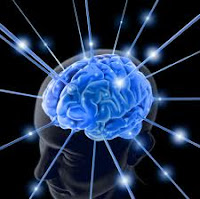 It's commonly believed that James Watson and Francis Crick discovered the double helix shape of DNA. But in fact, they based their work on one of their colleagues at King's College in London - Rosalind Franklin, an x-ray diffraction expert whose images of DNA proteins in the early 1950s revealed a helix shape. It wasn't until they saw Franklin's work that Watson and Crick began hunting for the long, braided twist that turned out to be DNA's true shape.
It's commonly believed that James Watson and Francis Crick discovered the double helix shape of DNA. But in fact, they based their work on one of their colleagues at King's College in London - Rosalind Franklin, an x-ray diffraction expert whose images of DNA proteins in the early 1950s revealed a helix shape. It wasn't until they saw Franklin's work that Watson and Crick began hunting for the long, braided twist that turned out to be DNA's true shape. Why wasn't Franklin honored for her contributions? Many have argued that her early death prevented her from getting the recognition she deserved, since Nobel Prizes can only go to living people. Others have suggested something slightly more sinister.
Why wasn't Franklin honored for her contributions? Many have argued that her early death prevented her from getting the recognition she deserved, since Nobel Prizes can only go to living people. Others have suggested something slightly more sinister.Franklin's groundbreaking work was so good that she was able to secure a highly coveted position in the biology department at a top university - even though she lived at a time when it was widely believed that women could not become scientists. And yet she could not have casual meetings with colleagues in her own college's Common Room, which was reserved for men only. To be fair, many of her scientifically-minded colleagues also avoided the Common Room, which was said to be packed with stuffy old reverends.
And yet the same prejudices that prevented her from entering the Common Room appear to have bled over into her colleagues' views of her. Watson, who was in 2007 suspended from his research position for making sexist and racist comments, dismissed Franklin's contributions to the discovery of DNA's structure in his memoirThe Double Helix. Many years later, both Watson and Crick admitted that they had been too dismissive of Franklin's work, and that her discoveries were what led to their own.
There is now ample evidence from multiple sources that Franklin's colleagues and graduate students at King's College showed her x-ray images of DNA to Watson and Crick without her permission or knowledge. The so-called Photo 51 (pictured here) provided proof that DNA's structure was probably a helix. Several witnesses - including Crick and Watson themselves - say that the two researchers saw this photo before "discovering" the double helix.










